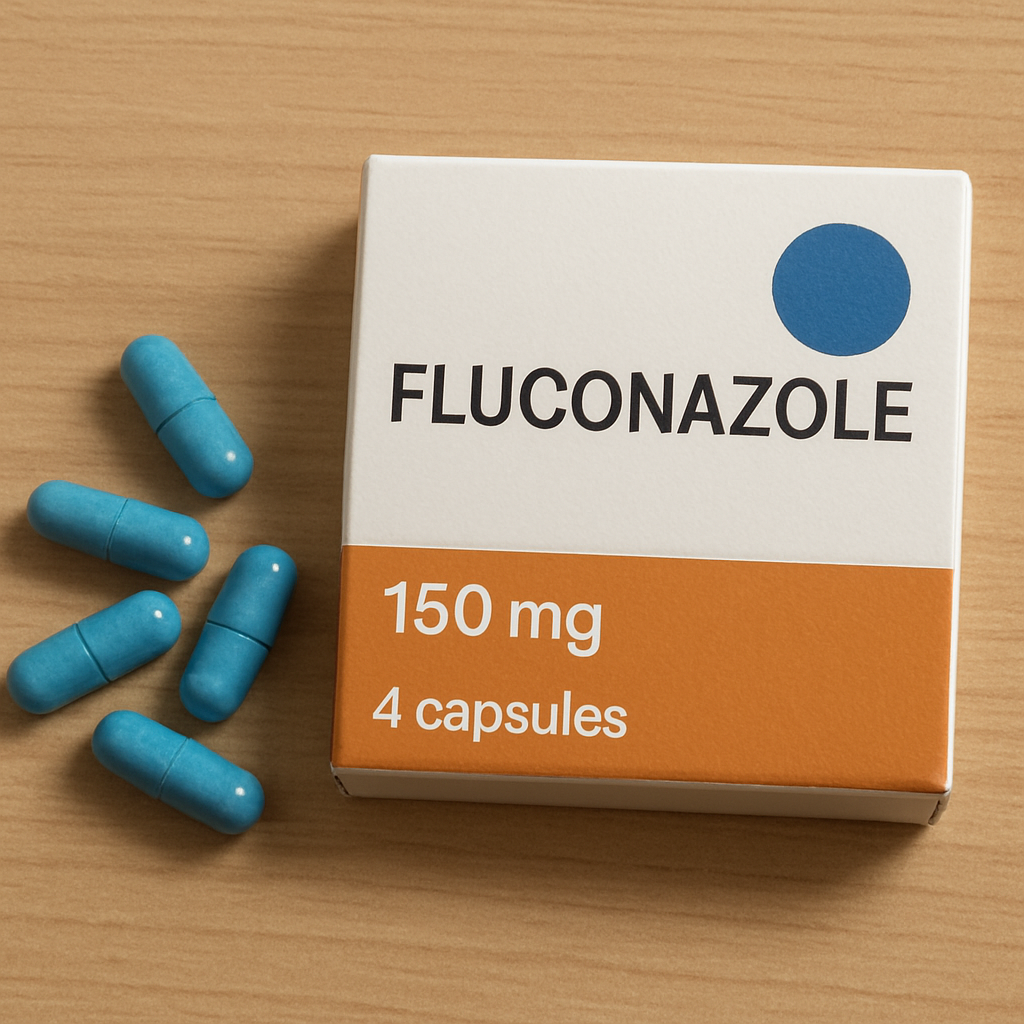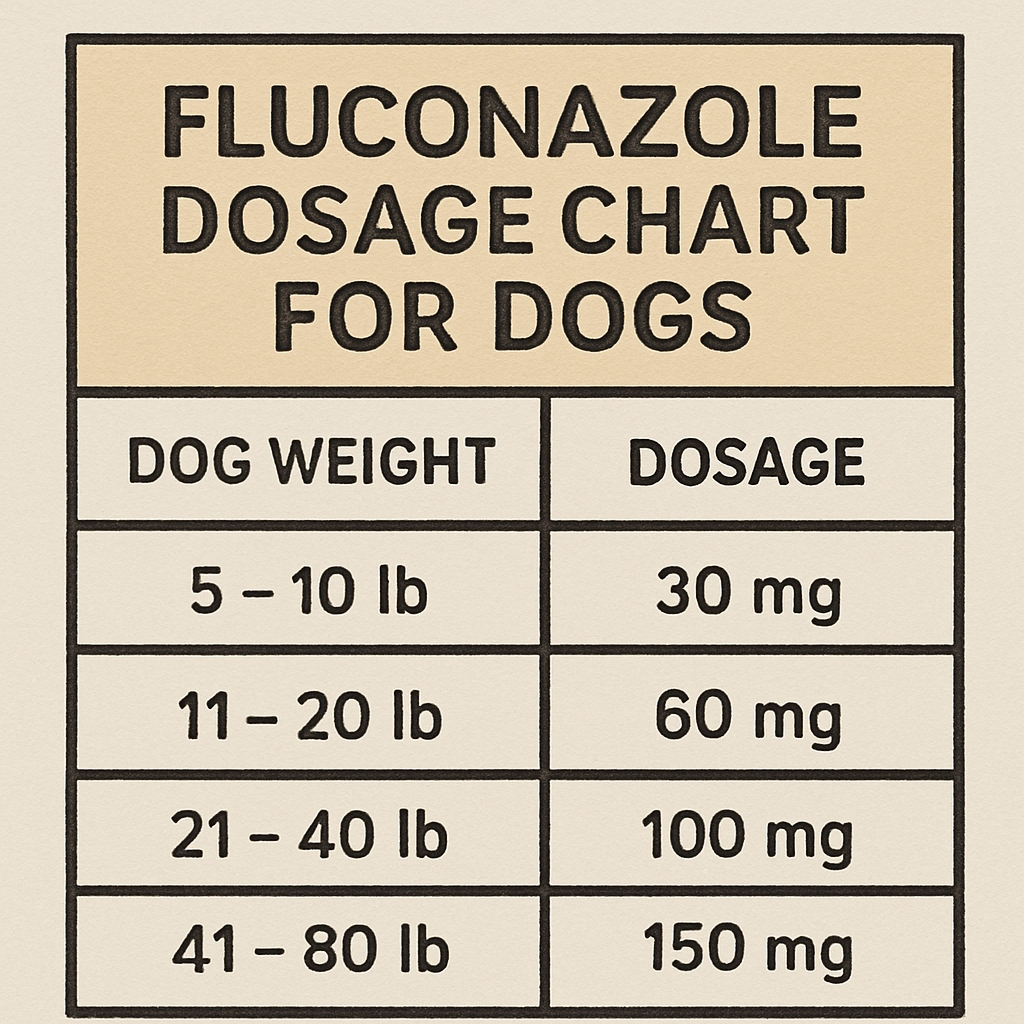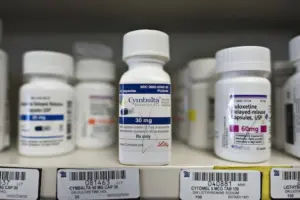Fluconazole is a widely recognized antifungal medication, extensively used to treat various fungal infections. Its efficacy is not only acknowledged in humans but also in veterinary medicine, especially for dogs. Understanding the nuances of safe and appropriate fluconazole dosages for different conditions is pivotal in ensuring its effectiveness while minimizing potential side effects. This comprehensive guide explores the recommended fluconazole dosages for various canine conditions, offering valuable insights for pet owners and veterinary professionals alike.

Fluconazole is part of the azole antifungal drug class, which is renowned for its ability to combat fungal growth. By inhibiting the enzymes necessary for fungal cell membrane formation, fluconazole effectively halts the spread of infections caused by fungi and yeast. This medication is particularly potent against infections such as blastomycosis, cryptococcosis, and systemic candidiasis.
Mechanism of Action
Fluconazole works by targeting the synthesis of ergosterol, a critical component of fungal cell membranes. By inhibiting the enzyme lanosterol 14-alpha-demethylase, fluconazole disrupts the production of ergosterol, leading to a compromised cell membrane and eventual fungal cell death. This selective action ensures that fluconazole is highly effective against a broad spectrum of fungal pathogens.
Advantages Over Other Antifungals
Compared to other antifungal medications, fluconazole offers distinct advantages, including excellent oral bioavailability and tissue penetration. Its ability to reach therapeutic concentrations in various body compartments, such as the central nervous system, makes it an ideal choice for treating systemic infections. Additionally, fluconazole’s well-documented safety profile further enhances its appeal in both human and veterinary medicine.
Common Fungal Infections Treated
Fluconazole is effective against a variety of fungal infections commonly encountered in dogs. Blastomycosis, caused by Blastomyces dermatitidis, often affects the lungs and other organs. Cryptococcosis, primarily caused by Cryptococcus neoformans, targets the respiratory and central nervous systems. Systemic candidiasis, an overgrowth of Candida species, can lead to widespread systemic issues. Understanding these infections is crucial for determining the appropriate fluconazole dosage.
Fluconazole Dosage for Dogs
When prescribing fluconazole for dogs, veterinarians consider several factors, including the dog’s weight, the severity of the infection, and the specific condition being treated. Let’s delve into the appropriate dosages based on these criteria.
General Dosage Guidelines
For most fungal infections, the general dosage of fluconazole for dogs ranges from 5 to 10 mg per kilogram of body weight per day. However, the exact dosage may vary depending on the specific condition being treated and the veterinarian’s discretion.
Importance of Individualized Dosage
Each dog is unique, and the prescribed fluconazole dosage should be tailored to their specific needs. Factors such as age, breed, and overall health play a crucial role in determining the optimal dosage. Veterinarians carefully assess these variables to ensure effective and safe treatment.
Dosage Adjustments Based on Response
Monitoring the dog’s response to fluconazole is essential for making necessary dosage adjustments. Regular follow-ups with the veterinarian allow for evaluating the treatment’s effectiveness and addressing any emerging concerns. Adjustments may involve increasing or decreasing the dosage based on the dog’s progress and tolerance to the medication.
Role of Veterinary Expertise
Veterinarians possess the expertise required to determine the most suitable fluconazole dosage for each dog. Their knowledge of pharmacology and experience with similar cases enable them to make informed decisions, ensuring that the prescribed dosage is both effective and safe for the patient.
Dosage Chart by Weight
To simplify the process, here’s a dosage chart that outlines the typical fluconazole dosage for dogs based on their weight:

- Small dogs (5-10 kg): 25-50 mg per day
- Medium dogs (10-20 kg): 50-100 mg per day
- Large dogs (20-30 kg): 100-150 mg per day
- Extra-large dogs (30+ kg): 150-300 mg per day
Understanding Weight-Based Dosage
The weight-based dosage chart serves as a helpful reference for pet owners and veterinarians alike. By categorizing dogs into size groups, this chart provides a convenient starting point for determining the appropriate fluconazole dosage. However, it is crucial to remember that individual needs may vary, necessitating consultation with a veterinarian.
Adjustments for Overweight or Underweight Dogs
In cases where a dog is significantly overweight or underweight, standard dosage guidelines may not apply. Veterinarians may need to adjust the dosage to accommodate the dog’s unique body composition, ensuring that the medication remains effective without causing adverse effects.
Importance of Accurate Weight Measurement
Accurate weight measurement is essential for determining the correct fluconazole dosage. Regular weigh-ins at the veterinary clinic help maintain precise dosage calculations, minimizing the risk of underdosing or overdosing the medication. Pet owners can also learn how to weigh their dogs at home for more frequent monitoring.
Condition-Specific Dosages
Blastomycosis
Blastomycosis is a fungal infection caused by inhaling the spores of the Blastomyces dermatitidis fungus. For dogs diagnosed with blastomycosis, the recommended dosage of fluconazole is typically 5-10 mg/kg per day. Treatment duration may extend for several months, depending on the severity of the infection and the dog’s response to the medication.
Detailed Treatment Plan
The treatment plan for blastomycosis is often extensive, involving prolonged administration of fluconazole. Veterinarians monitor the dog’s progress closely, adjusting the dosage as needed to ensure the infection is effectively managed. Regular follow-up appointments are essential for tracking the dog’s recovery and addressing any complications.
Monitoring Progress and Side Effects
During treatment for blastomycosis, it is crucial to monitor the dog for any adverse effects of fluconazole. Common side effects, such as gastrointestinal upset, should be reported to the veterinarian promptly. Monitoring the dog’s overall health and behavior helps ensure a successful recovery.
Importance of Early Diagnosis
Early diagnosis of blastomycosis significantly improves the chances of successful treatment. Pet owners should be vigilant for symptoms such as coughing, fever, and lethargy, seeking veterinary attention promptly if these signs appear. Timely intervention allows for the initiation of fluconazole therapy before the infection becomes more severe.
Cryptococcosis
Cryptococcosis is another serious fungal infection that primarily affects the respiratory system and central nervous system. In cases of cryptococcosis, the dosage of fluconazole may be higher, often ranging from 10 to 15 mg/kg per day. As with blastomycosis, prolonged treatment is often necessary to fully eradicate the infection.
Comprehensive Treatment Approach
The treatment of cryptococcosis requires a comprehensive approach, often involving higher doses of fluconazole. Veterinarians may adjust the dosage based on the dog’s response and any concurrent health conditions. Regular monitoring of clinical signs and laboratory tests ensures that the treatment remains effective.
Recognizing Symptoms and Complications
Cryptococcosis can present with a range of symptoms, including nasal discharge, neurological signs, and skin lesions. Early recognition of these symptoms is crucial for initiating timely treatment. Complications such as meningitis may arise, necessitating close veterinary supervision throughout the treatment process.
Long-Term Management Strategies
Given the chronic nature of cryptococcosis, long-term management strategies are essential. Veterinarians may recommend periodic re-evaluation and maintenance therapy to prevent recurrence. Pet owners should adhere to the prescribed treatment plan and remain vigilant for any signs of relapse.
Systemic Candidiasis
Systemic candidiasis is an overgrowth of Candida yeast in the body, leading to various symptoms and potential complications. The dosage for systemic candidiasis in dogs typically falls within the 5-10 mg/kg range. The duration of treatment may vary depending on the severity of the infection and the dog’s overall health.
Tailored Treatment Regimens
Treatment regimens for systemic candidiasis are tailored to each dog’s specific condition. Veterinarians consider factors such as the extent of the infection and the presence of any underlying health issues. Regular follow-up appointments allow for adjustments to the treatment plan based on the dog’s progress.
Identifying and Addressing Risk Factors
Identifying and addressing risk factors for systemic candidiasis is crucial for effective treatment. Conditions such as immunosuppression or previous antibiotic use may predispose dogs to candidiasis. Veterinarians work with pet owners to manage these risk factors and optimize the dog’s overall health.
Importance of a Holistic Approach
A holistic approach to managing systemic candidiasis involves addressing both the infection and any contributing factors. Veterinarians may recommend dietary changes, supplements, or supportive therapies to enhance the dog’s immune response. This comprehensive approach improves the likelihood of successful treatment and long-term recovery.
Monitoring and Adjustments
Monitoring your dog’s response to fluconazole is crucial to ensure the treatment’s effectiveness and to adjust the dosage if necessary. Here are some key points to consider:
Regular Veterinary Check-Ups
Regular check-ups with your veterinarian allow for the evaluation of your dog’s progress and any necessary adjustments to the dosage.
Frequency of Check-Ups
The frequency of veterinary check-ups may vary based on the severity of the infection and the dog’s response to treatment. Initially, more frequent visits may be necessary to closely monitor the dog’s progress. As the dog stabilizes, check-up intervals may be extended while maintaining vigilant observation of their condition.
Diagnostic Testing and Monitoring
During check-ups, veterinarians may perform diagnostic tests to assess the dog’s response to fluconazole. Blood tests, imaging, and fungal cultures provide valuable information about the infection’s status and the effectiveness of the treatment. These tests guide any necessary adjustments to the dosage or treatment plan.
Communication with the Veterinarian
Open communication with the veterinarian is essential for successful treatment. Pet owners should report any changes in the dog’s condition, including new symptoms or side effects. This information allows the veterinarian to make informed decisions about the treatment plan and ensure the dog’s well-being.
Observing Side Effects
While fluconazole is generally well-tolerated, some dogs may experience side effects such as loss of appetite, vomiting, or diarrhea. If these occur, consult your veterinarian for guidance.
Common Side Effects and Management
Common side effects of fluconazole, such as gastrointestinal upset, are typically mild and transient. Veterinarians may recommend dietary adjustments or supportive care to manage these symptoms. Pet owners should monitor their dogs closely and report any persistent or severe side effects to the veterinarian.
Rare but Serious Side Effects
Although rare, serious side effects such as liver toxicity or severe allergic reactions may occur. Veterinarians monitor liver function through blood tests to detect any signs of hepatotoxicity. If serious side effects are suspected, immediate veterinary intervention is necessary to prevent complications.
Strategies for Reducing Side Effects
Strategies for reducing side effects include starting with a lower fluconazole dose and gradually increasing it, if tolerated. Administering the medication with food may also help minimize gastrointestinal upset. Veterinarians may adjust the treatment plan based on the dog’s tolerance and response to fluconazole.
Adherence to Treatment Plan
It’s important to adhere to the prescribed treatment plan and not to discontinue the medication prematurely, even if your dog appears to be improving.
Importance of Complete Treatment
Completing the full course of fluconazole treatment is essential for eradicating the infection and preventing relapse. Discontinuing the medication prematurely may lead to incomplete resolution of the infection and the development of antifungal resistance. Pet owners should follow the veterinarian’s instructions closely and ensure consistent administration of the medication.
Strategies for Ensuring Compliance
To ensure compliance with the treatment plan, pet owners can establish a daily routine for administering fluconazole. Setting reminders or using pill organizers can help maintain consistency. Involving all family members in the dog’s care ensures that everyone is aware of the treatment plan and its importance.
Addressing Challenges in Administration
If challenges arise in administering fluconazole, such as difficulty with pill ingestion, pet owners should consult their veterinarian for guidance. Alternative formulations, such as liquid suspensions, may be available to facilitate administration. Veterinarians can provide tips and techniques for making the medication process more manageable.
Safety Precautions and Considerations

by Judy Beth Morris (https://unsplash.com/@judy_beth_morris_idaho)
While fluconazole is a powerful antifungal medication, certain precautions should be taken to ensure the safety and well-being of your dog.
Consultation with a Veterinarian
Always consult with a qualified veterinarian before starting fluconazole treatment. They will assess your dog’s condition and determine the appropriate dosage.
Initial Evaluation and Diagnosis
The initial evaluation by a veterinarian involves a thorough examination and diagnostic testing to confirm the fungal infection. Accurate diagnosis is crucial for selecting the appropriate treatment and determining the optimal fluconazole dosage. Veterinarians consider the dog’s medical history, clinical signs, and laboratory results when formulating the treatment plan.
Ongoing Communication and Support
Ongoing communication with the veterinarian is essential throughout the treatment process. Pet owners should feel comfortable reaching out to the veterinarian with any questions or concerns. Regular updates on the dog’s condition enable the veterinarian to provide timely support and make informed decisions about the treatment plan.
Importance of a Veterinary-Patient Relationship
Establishing a strong veterinary-patient relationship fosters trust and collaboration between the pet owner and the veterinarian. This relationship ensures that the dog’s health is prioritized and that any challenges encountered during treatment are addressed effectively. Veterinarians work closely with pet owners to achieve the best possible outcomes for their dogs.
Avoiding Overdose
Administering an overdose of fluconazole can be harmful to your dog. Stick to the prescribed dosage and avoid self-adjusting the medication.
Risks and Consequences of Overdose
Overdosing on fluconazole can lead to serious health consequences, including liver damage and toxicity. Symptoms of overdose may include vomiting, lethargy, and jaundice. Pet owners should adhere strictly to the prescribed dosage and seek veterinary guidance if any concerns about overdose arise.
Strategies for Preventing Overdose
To prevent overdose, pet owners should double-check the dosage instructions provided by the veterinarian. Keeping a medication log can help track each dose administered, ensuring consistency and accuracy. If multiple medications are being given, pet owners should organize them to avoid confusion and potential dosing errors.
Responding to Suspected Overdose
If an overdose is suspected, immediate veterinary attention is necessary. Veterinarians may perform diagnostic tests and provide supportive care to address any adverse effects. Prompt intervention can mitigate the risks associated with overdose and ensure the dog’s safety.
Consideration of Concurrent Medications
Inform your veterinarian of any other medications your dog is taking to avoid potential drug interactions.
Identifying Potential Drug Interactions
Fluconazole may interact with other medications, altering their effectiveness or increasing the risk of side effects. Veterinarians review the dog’s current medication regimen to identify any potential interactions. Adjustments to the treatment plan may be necessary to ensure compatibility and safety.
Managing Polypharmacy
In cases where multiple medications are prescribed, managing polypharmacy is crucial for minimizing the risk of interactions. Veterinarians carefully assess the necessity of each medication and prioritize treatments based on the dog’s condition. Regular communication with the veterinarian ensures that any changes to the medication regimen are made with consideration of the dog’s overall health.
Importance of Comprehensive Medication History
Providing a comprehensive medication history to the veterinarian is essential for identifying potential interactions. Pet owners should disclose all prescription and over-the-counter medications, as well as any supplements or herbal remedies the dog is receiving. This information enables the veterinarian to make informed decisions about the treatment plan.
Monitoring for Allergic Reactions
In rare cases, dogs may exhibit allergic reactions to fluconazole. Seek immediate veterinary attention if you notice symptoms such as swelling, hives, or difficulty breathing.
Recognizing Signs of Allergic Reactions
Signs of an allergic reaction to fluconazole may include facial swelling, hives, itching, and respiratory distress. Pet owners should be vigilant for these symptoms, particularly after the initial doses of fluconazole. Early recognition and intervention are crucial for preventing more severe reactions.
Emergency Response and Treatment
If an allergic reaction is suspected, seeking immediate veterinary care is essential. Veterinarians may administer antihistamines or corticosteroids to manage the reaction and stabilize the dog. In severe cases, hospitalization and supportive care may be necessary to ensure the dog’s safety.
Preventive Measures and Precautions
To minimize the risk of allergic reactions, veterinarians may recommend starting with a lower fluconazole dose and gradually increasing it. Pet owners should observe their dogs closely during the initial treatment period and report any unusual symptoms to the veterinarian. If a known allergy to fluconazole exists, alternative antifungal medications may be considered.
Conclusion
Understanding the safe dosage of fluconazole for different conditions in dogs is essential for ensuring effective treatment and minimizing risks. By consulting with a veterinarian and adhering to the prescribed dosage, you can help your furry friend recover from fungal infections and maintain their overall health.
Remember, every dog is unique, and the appropriate dosage may vary based on factors such as weight, condition severity, and individual response. When in doubt, always seek guidance from a veterinary professional to ensure your dog’s well-being and speedy recovery.
Importance of Veterinary Guidance
Veterinary guidance is invaluable in navigating the complexities of fluconazole treatment. Veterinarians possess the expertise required to tailor the treatment plan to each dog’s specific needs, ensuring that the dosage is both safe and effective. Pet owners should prioritize communication with their veterinarian and adhere to their recommendations.
Commitment to Pet Health and Recovery
A commitment to the dog’s health and recovery involves diligent adherence to the treatment plan and proactive monitoring of their condition. Pet owners play a crucial role in supporting their dogs throughout the treatment process, ensuring that they receive the care and attention needed for a successful recovery.
Future Considerations and Follow-Up
Future considerations may include periodic follow-up appointments to monitor the dog’s health and prevent recurrence of the infection. Veterinarians may recommend maintenance therapy or lifestyle modifications to support the dog’s long-term well-being. Pet owners should remain vigilant and proactive in managing their dog’s health, seeking veterinary guidance as needed.
By understanding fluconazole dosages and collaborating with a veterinarian, pet owners can ensure that their dogs receive the best possible care for fungal infections. This comprehensive approach enhances the likelihood of successful treatment and contributes to the dog’s overall health and happiness.


